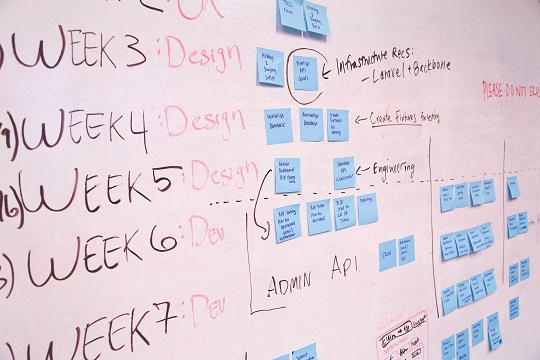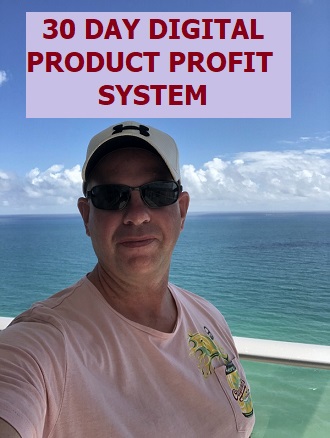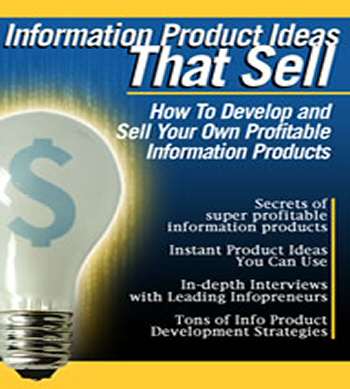I just had to put this blog post together for you after spending some time with new InfoMarketer’sZone members this weekend around setting up their product development plans.
Whether your plan is to make information (how-to, knowledge based) products your main source of income in your business or you plan to make your signature information products be an additional income stream to another business focus (affiliate marketing, content marketing, ad monetization, PPL, e-commerce, etc…) – you must understand what a typical development plan looks like for this particular stream of income.
Clearly, there is confusion as evidenced by the two types of questions I received…
On the one hand, I had a member ask me how they can release a new product each month…12 products this year.
Probably more common are those that believe they can reach their target income goals based on 1 product and aren’t even considering the fact that they must become a business with multiple products and not just ride on one single product.
What Should Your Product Plan Look Like?
When we put together a product plan for a given niche market (we have done this across 3 very different niche markets in our businesses and have done it with thousands of others so this is the formula we have found works best), we adhere to these 3 principles:
- We start with the end goal in mind (Ex. to build a $1M business over the next 3-years) and then work back with our financial goals from there so that we have a number in mind before we even plan our products
- We always plan to have at least 3-tiers of products available in any given sub-niche or topic with our niche: entry-level product typically priced between $17-$47; mid-level bundle priced between $47 and $197; a high-end offering that is either priced as a fixed-product at > $197 OR as a continuity product such as a membership site or recurring coaching program, inner-circle program, etc…
- Aim to have 1 new product released no more often that once per Quarter and no less than once per Half which leads to between 2-4 new products in a given niche each year. This is important, if you release more than one product per Quarter chances are you will not be able to adequately launch and market that product and if you launch less than 2 products per year you will lose important momentum and slow your growth toward your ultimate income goal substantially
Knowing Your Numbers
Let’s look at the example of building a $1M business over the next 3-years.
Let’s also assume the revenue roughly breaks down like this:
Year 1: $100K
Year 2: $300K
Year 3: $1M
With this plan we allow ourselves substantial room in Year 1 and still some room in Year 2 to ramp our product development and focus on launching, branding, securing key partnerships and building a strong sales funnel and pipeline.
Now that we have these numbers, we can work backward in terms of product offerings.
Let’s assume that we will launch 3 products each year – somewhere in the middle of our 2-4 product-per-year target.
Product 1: This is our first intro product at $27 – a high-value, highly desired product in your niche that will provide the lead or tripwire product in our sales funnel. The objective here is to sell 1000 copies of your intro product (just over 80 per month) for a total of $27,000, nearly a third toward your annual revenue goal
Product 2: We augment the main product with some additional bonuses, a series of interviews, a fixed number of live coaching calls and we price that at $197. Based on results of using upsells on the original product sale to sell these tier-2 products we can expect that we will sell about 20% (often you can get this higher, but let’s go with this conservative view for now) of the qty we sell of tier-one products which means we should be able to move about 200 of the $197 tier-2 product for an additional revenue of $39,400 which gives us a total annual revenue of $66,400 leaving us a difference of $33,600 to meet our annual $100K revenue objective
Product 3: Based on the top 10% of our target market wanting more personalized and “insider-focused” information, we enhance the top-tier product with additional coaching, additional services (done by your or outsourced), access to a private membership site, a consulting or inner-circle package, etc… and assume we can sell these to about 10% of our customer base or 100 customers. I bet you can see what we need to have as a price target for our higher-end package don’t you? We would need to price our top-tier product at least $336 to achieve the overall goal of generating $33,600 in additional revenue for our information product business. Let’s assume we price the top-tier package at $397 leaving ourselves some room for affiliate commissions and other cost-of sales factors…we now have our Year 1 plan.
You get the idea, we then lead into Year 2 where we carry Year 1’s products and revenues in factoring in a slight increase in sales for those Year 1 offerings due to increased marketing and branding as well as duplicating this process for another set of 3-products in year 2.
The same process holds for Year 3 where you again see additional growth from year 1’s products added to growth around Year 2’s products and add a third set of products to the mix so that you reach your $1M objective.
Now, what you will find is that as you track to these numbers you will begin to generate substantial profit with which you can begin to outsource various aspects of your business such as some product development, operational efforts such as setting up websites, payment systems, etc… and you can begin to spend money on targeted advertising to help drive additional leads into your sales funnel.
I realize this is quite a lot of detail for a blog post…typically we go over this type of information inside InfoMarketer’sZone where you have access to us through the private email and private mentor’s forum to setup your specific plan…but I wanted to dispel some common myths for those of you who may be heading down the wrong path.
If you have a question on this, post it as a comment, we would be happy to help.



